Learn about the countless Benefits of Castor Oil and Baking Soda and learn how to use them effectively for the best results!
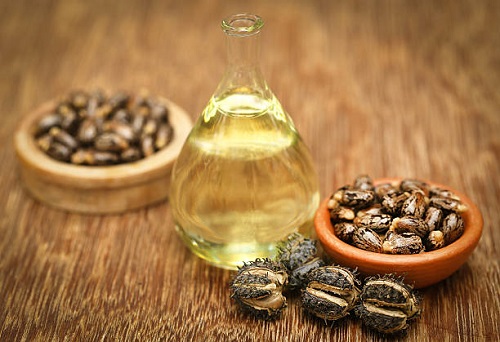
Discover how Castor Oil and Baking soda works together and can be a solution to various ailments!
How Do Castor Oil and Baking Soda Work More Effectively Together?
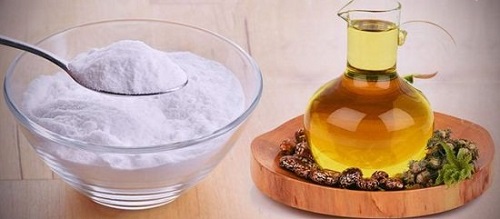
The combination of Castor Oil and Baking Soda is effective due to their complementary properties and potential synergistic effects.
Baking soda, known for its exfoliating properties, helps remove dead skin cells, dirt, and impurities from the skin’s surface. This gentle physical exfoliation promotes a smoother and brighter complexion.
Castor oil, on the other hand, acts as a moisturizer and nourishes the skin, preventing excessive drying that can occur with exfoliation. It also possesses antibacterial and anti-inflammatory properties, which can be particularly beneficial for acne-prone skin.
By combining these two ingredients, you create a potent mixture that not only cleanses and exfoliates but also helps reduce bacterial overgrowth and soothe inflammation. This combination can unclog pores, reduce excess oil, and potentially improve acne symptoms.
However, do note that the exfoliating action of baking soda should be used with caution, as excessive or rough scrubbing can damage the skin’s protective barrier. Also, ensure to perform a patch test and use this mixture in moderation to avoid skin irritation or dryness. Do consult a healthcare expert if you have any particular skin concern.
Benefits of Castor Oil and Baking Soda on Skin
1. Castor Oil and Baking Soda For Dark Spots
Baking soda acts as a gentle exfoliant, helping to remove dead skin cells and promote cell turnover. This can help fade dark spots by sloughing off the outer layers of the skin that may contain excess pigment.
Castor oil, on the other hand, has moisturizing properties that can nourish and hydrate the skin. It contains certain compounds that help reduce the appearance of scars, including dark spots. Castor Oil and Baking Soda for Dark Spots can be an excellent remedy as it helps in the regeneration of healthy skin cells and fades discoloration.
Castor Oil Spot Treatment Recipe:
- Mix a small amount of baking soda with enough castor oil to form a paste-like consistency.
- Gently massage the mixture onto the affected area, focusing on the dark spots.
- Leave it on for a few minutes, allowing the ingredients to penetrate the skin.
- Rinse off with warm water and pat the skin dry.
2. Castor Oil and Baking Soda for Wart Removal
Castor oil contains ricinoleic acid, which has antimicrobial and anti-inflammatory properties. It helps to soften the wart and potentially inhibit the growth of the underlying virus responsible for the wart.
Baking soda, with its alkaline nature, neutralizes the acidic conditions favored by certain viruses, potentially inhibiting their growth.
Do remember that warts are caused by various strains of the human papillomavirus (HPV), and their treatment may require specific interventions such as cryotherapy, laser therapy, or prescription medications.
Castor Oil and Baking Soda for Wart Removal Recipe:
- Gently apply the paste directly onto the wart, ensuring it is completely covered.
- Cover the wart with a bandage or adhesive tape to keep the mixture in place.
- Reapply the mixture daily and cover the wart until it resolves or shows signs of improvement.
3. Castor Oil and Bicarbonate of Soda for Acne
Castor oil possesses antibacterial properties that can help combat acne-causing bacteria. Baking soda acts as an exfoliant, unclogging pores and removing excess oil and impurities. Together, they can assist in reducing acne breakouts and promoting clearer skin.
However, do note that this combination may not be suitable for everyone, and you must always perform a patch test and consult with a dermatologist for personalized advice.
Castor Oil and Bicarbonate of Soda for Acne Recipe
- In a small bowl, combine the baking soda and castor oil to create a paste.
- Cleanse your face with a gentle cleanser and pat it dry.
- Apply the paste to the affected areas of your skin where you have acne or breakouts.
- Gently massage the mixture onto your skin using circular motions for about one minute.
- Leave it on for 5-10 minutes to allow the ingredients to penetrate the skin. Rinse off the mixture with lukewarm water and pat your skin dry.
- Follow up with a suitable moisturizer to prevent dryness.
4. Castor Oil and Baking Soda for Skin Tan
Baking soda has mild bleaching properties that can help lighten the skin and reduce the appearance of tan. When combined with castor oil, which provides hydration, it can aid in the fading of tan lines and restore a more balanced complexion.
Castor Oil and Baking Soda for Skin Tan Recipe:
- In a small bowl, mix the baking soda and castor oil until they form a paste-like consistency.
- Apply the mixture to the areas of your skin that are tanned or have uneven pigmentation. Gently massage the mixture into your skin using circular motions for a few minutes.
- Leave it on for 10-15 minutes to allow the ingredients to work on your skin.
- Rinse off the mixture with lukewarm water. Follow up with a moisturizer to keep your skin hydrated.
5. Castor Oil for Fungal Infections
Due to the presence of anti-bacterial properties, the combination of castor oil and baking soda is effective in eliminating fungal infections like Athlete’s foot.
Castor Oil and Baking Soda for Fungal Infection
- Combine castor oil and baking soda in a medium-sized bowl.
- Apply the paste to the fungal-infected area.
- Leave for 2 hours and wash with clean water.
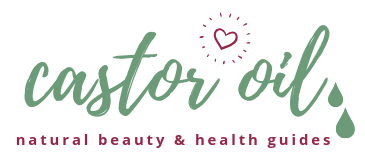
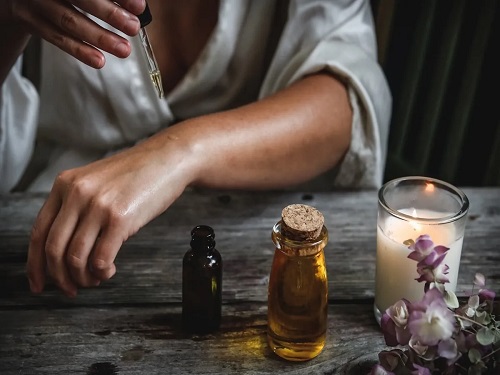
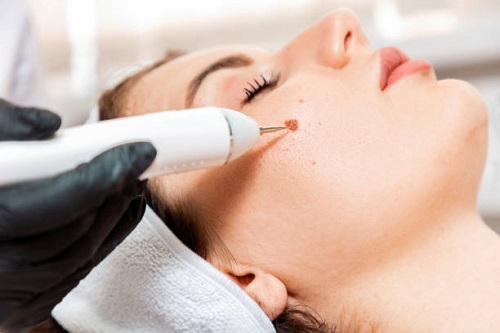
Can I use the combination of caster oil and baking soda for ageing?
Hey Joey – castor oil and baking soda work very well together but for aging, you can stick with castor oil, vitamin E, coconut oil, almond oil works great and black seed oil ! Check my castor oil for wrinkles post.
I have lot of moles in my face which has been lying there for ages (I’m 42 now). Will castor oil and baking soda help?
Hi Fahima, yes castor oil can help with the appearance and the size of moles. Read my full article on castor oil for moles here! Thanks for your question and good luck!
I was wondering how much of castor oil and baling soda you would mix togethet for rubbing on the soles of your feet at night. Thank you kindly
Tammy
Hey Tammy! It depends on what kind of texture you would like. A little bit of castor oil goes a long way, so I don’t think you would need more than a teaspoon. Start with a teaspoon each and mix until you get the desired texture. You can add coconut oil to help spread the castor oil easier, since it’s quite thick. Hope you find the combo that works for you! xo
Hi there, I just tried baking soda and castor oil, I made it like a paste, then apply it to my face. How many times do I have to use this remedy? Thank you for all your info.
Hi Lorna, thanks for your question! How was the paste? What are your expectations/goals for using this mixture? If it’s to treat acne, or just soften up your skin, the amount of times you apply it per week can vary from once per week, up to four or five times a week. All depends on your desired results 🙂
hello! how do I store the mixture? Is it recommended or just mix it upon usage? thank you for your informative article!
Hi there, many thanks for your question! It would be better to just mix the baking soda + water and heat up your castor oil whenever you’re ready to use it. It’s quick to make so using the ingredients fresh will be better in my opinion 🙂 Thanks again!
Hii, can i use this mix for underarms and knees to lighten them?
Or could you suggest me a remedy to lighten underarms and knees?
Your reply is much awaited.
Thank You
Hi Bushra, great question! I’ve not researched about this yet, but from what I know, baking soda would possibly be a good mix with lemon juice and used as a lightener for dark underarms. Castor oil is effective for dark eye circles and scars, so I’m confident you could use a mix of castor oil + baking soda + lemon to use as a natural skin lightener, for underarms or knees. I’ll try to write about this soon in a future article. Thanks for your question and good luck 🙂
Baking Soda and Castor Oil mixed together and will it be useful remedy for treating psoriasis skin diseases if applied? Your reply is much awaited
Hi M. Jagadeesh,
Thanks very much for reaching out. Baking soda and castor oil work very well together, and both being effective natural remedies for skin makes them the perfect combo for soothing or relieving the pain, itchiness, or redness due to skin diseases such as psoriasis. If you’d like to read more about castor oil and psoriasis, please see my article here.
Thanks for your patience as I respond to a large number of questions. Thanks again for reaching out and best of luck!